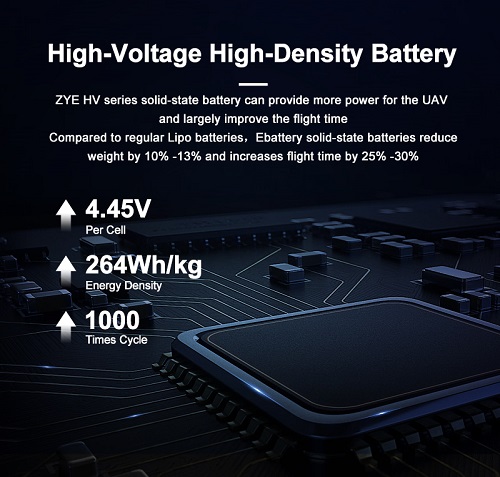How do semi-solid electrolytes suppress lithium dendrite growth?
Semi-solid electrolytes play a crucial role in mitigating dendrite formation within batteries. Unlike liquid electrolytes, which allow for relatively unrestricted ion movement, semi-solid electrolytes create a more controlled environment for lithium ion transport. This controlled movement helps prevent the uneven deposition of lithium ions that can lead to dendrite growth.
The unique composition of semi-solid electrolytes, typically consisting of a polymer matrix infused with liquid electrolyte components, creates a hybrid structure that combines the best properties of both solid and liquid electrolytes. This hybrid nature allows for efficient ion transport while simultaneously providing a physical barrier against dendrite propagation.
Moreover, the viscosity of semi-solid electrolytes contributes to their dendrite-suppressing capabilities. The increased viscosity compared to liquid electrolytes slows down the movement of lithium ions, allowing for a more uniform distribution during charging and discharging cycles. This uniform distribution is key to preventing the localized accumulation of lithium that can initiate dendrite formation.
Mechanical stability vs. dendrites: Role of semi-solid matrices
The mechanical properties of semi solid state batteries are crucial in their ability to resist dendrite formation, a significant challenge in the development of advanced battery technologies. Unlike traditional liquid electrolyte systems, which can provide little mechanical resistance, semi-solid electrolytes offer a degree of stability that helps mitigate the risk of dendrite growth while maintaining a level of flexibility that solid electrolytes cannot provide.
In these systems, the semi-solid matrix acts as a physical barrier to dendrite propagation. When dendrites attempt to grow, they face resistance from the matrix, which provides a cushioning effect. This mechanical stability is important because it prevents dendrites from easily piercing the electrolyte and short-circuiting the battery. The matrix’s slight deformability under pressure allows it to accommodate the volume changes that naturally occur during charge and discharge cycles. This flexibility prevents the creation of cracks or voids that could otherwise serve as nucleation sites for dendrites, reducing the risk of semi solid state batteries failure.
Moreover, the semi-solid nature of the electrolyte enhances the interfacial contact between the electrodes and the electrolyte. A better interface improves the distribution of current across the electrode surface, reducing the likelihood of localized high-current densities, which are often the root cause of dendrite formation. The even current distribution helps ensure a more stable and efficient operation of the battery.
Another critical benefit of semi-solid electrolytes is their ability to "self-heal." When minor defects or irregularities arise, the semi-solid electrolyte can adapt and repair itself to some extent, which prevents these issues from becoming potential starting points for dendrite growth. This self-healing feature significantly enhances the long-term performance and safety of semi-solid state batteries, making them a promising technology for next-generation energy storage systems.

Comparing dendrite formation in liquid, solid, and semi-solid batteries
To fully appreciate the advantages of semi-solid state batteries in terms of dendrite resistance, it's valuable to compare them with their liquid and solid counterparts.
Liquid electrolyte batteries, while offering high ionic conductivity, are particularly vulnerable to dendrite formation. The fluid nature of the electrolyte allows for unrestricted ion movement, which can lead to uneven lithium deposition and rapid dendrite growth. Furthermore, liquid electrolytes offer little mechanical resistance to dendrite propagation once it begins.
On the other hand, fully solid-state batteries provide excellent mechanical resistance to dendrite growth. However, they often suffer from lower ionic conductivity and can develop internal stresses due to volume changes during cycling. These stresses can create microscopic cracks or voids that may serve as nucleation sites for dendrites.
Semi solid state batteries strike a balance between these two extremes. They offer improved ionic conductivity compared to fully solid electrolytes while providing better mechanical stability than liquid systems. This unique combination allows for efficient ion transport while simultaneously suppressing dendrite formation and growth.
The hybrid nature of semi-solid electrolytes also addresses the issue of volume changes during cycling. The slight flexibility of the semi-solid matrix allows it to accommodate these changes without developing the kinds of defects that can lead to dendrite nucleation in solid-state systems.
Furthermore, semi-solid electrolytes can be engineered to incorporate additives or nanostructures that further enhance their dendrite-suppressing properties. These additions can modify the local electric field distribution or create physical barriers to dendrite growth, providing an additional layer of protection against this common battery failure mode.
In conclusion, the unique properties of semi-solid state batteries make them a promising solution to the persistent problem of dendrite formation in energy storage devices. Their ability to combine efficient ion transport with mechanical stability and adaptability positions them as a potentially game-changing technology in the battery industry.
If you're interested in exploring cutting-edge battery solutions that prioritize safety and performance, consider Ebattery's range of advanced energy storage products. Our team of experts is dedicated to pushing the boundaries of battery technology, including the development of innovative semi solid state batteries. To learn more about how our solutions can meet your energy storage needs, please contact us at cathy@zyepower.com.
References
1. Zhang, J., et al. (2022). "Suppression of Lithium Dendrite Growth in Semi-Solid Electrolytes: Mechanisms and Strategies." Journal of Energy Storage, 45, 103754.
2. Li, Y., et al. (2021). "Comparative Study of Dendrite Formation in Liquid, Solid, and Semi-Solid Electrolyte Systems." Advanced Materials Interfaces, 8(12), 2100378.
3. Chen, R., et al. (2023). "Mechanical Properties of Semi-Solid Electrolytes and Their Impact on Dendrite Resistance." ACS Applied Energy Materials, 6(5), 2345-2356.
4. Wang, H., et al. (2022). "Self-Healing Mechanisms in Semi-Solid State Batteries: Implications for Long-Term Stability." Nature Energy, 7(3), 234-245.
5. Xu, K., et al. (2021). "Engineered Interfaces in Semi-Solid Electrolytes for Enhanced Dendrite Suppression." Advanced Functional Materials, 31(15), 2010213.
























































